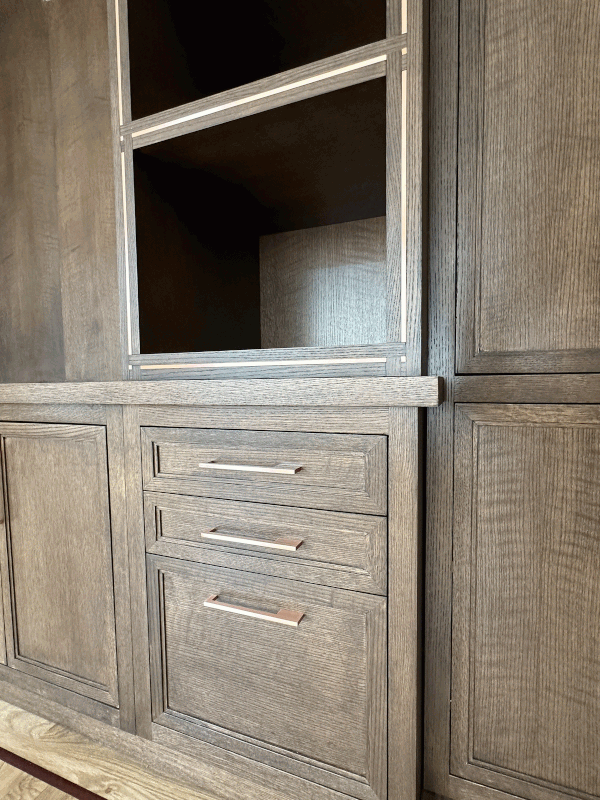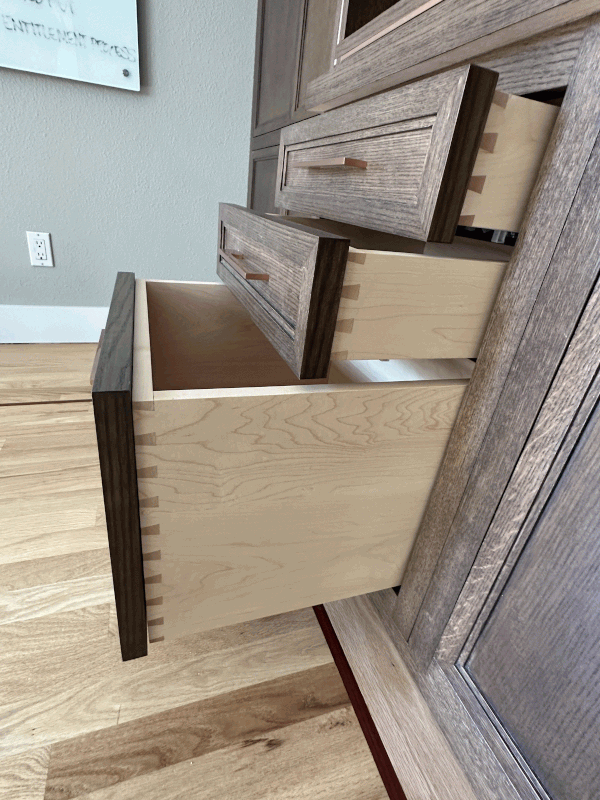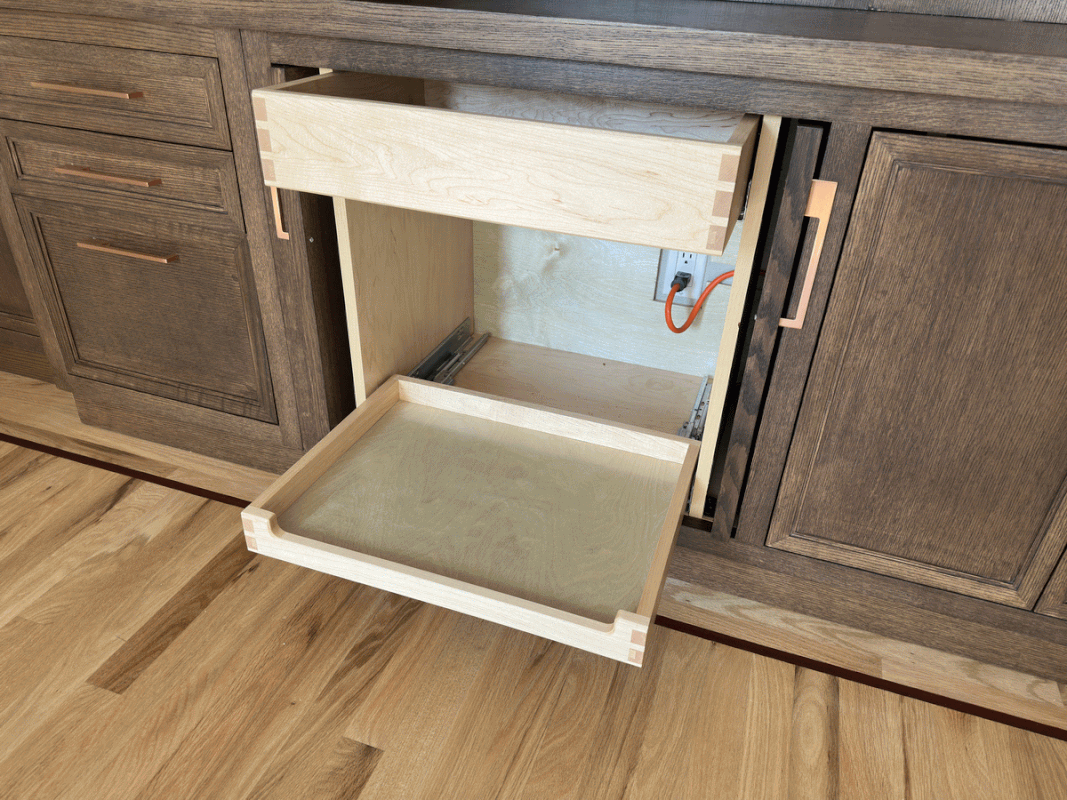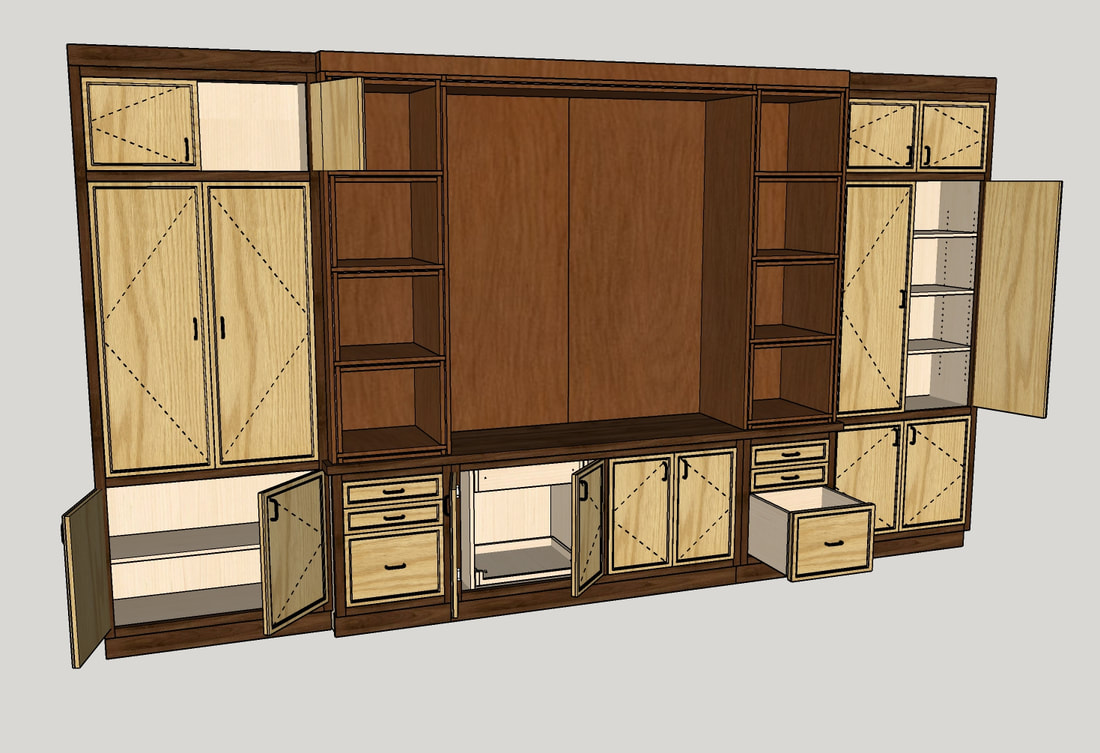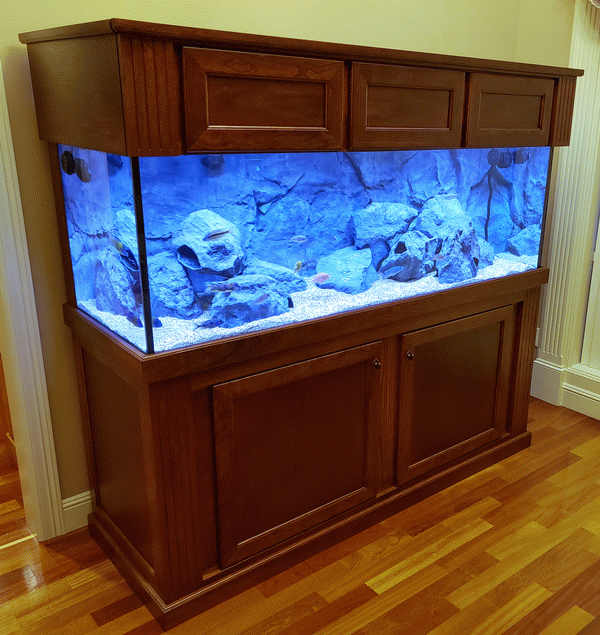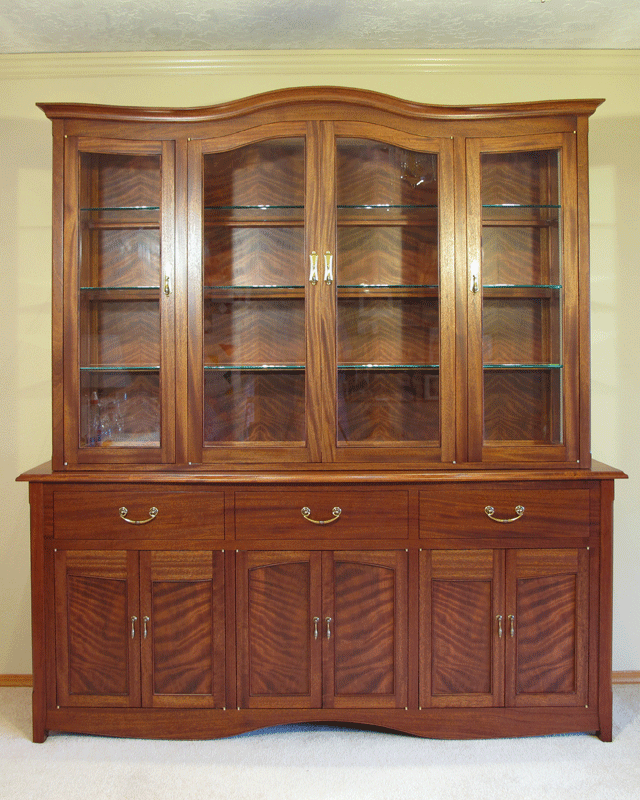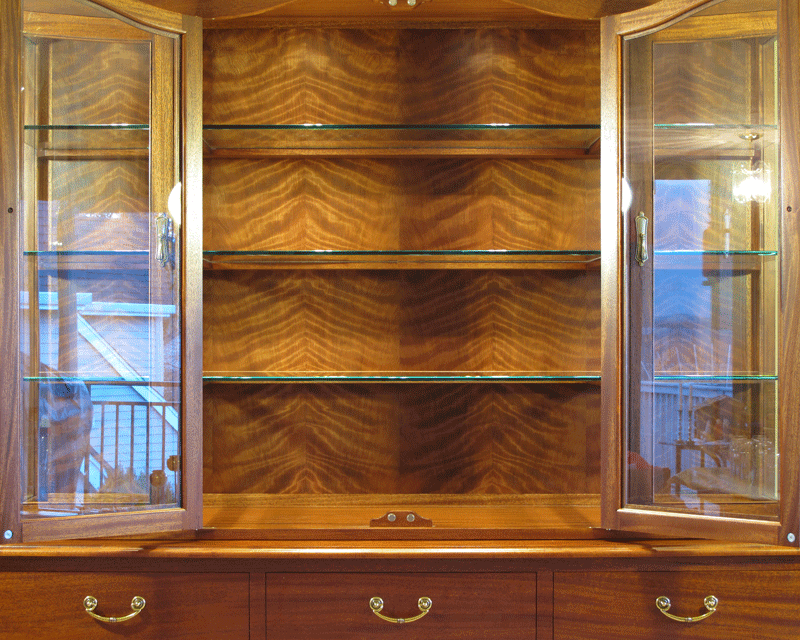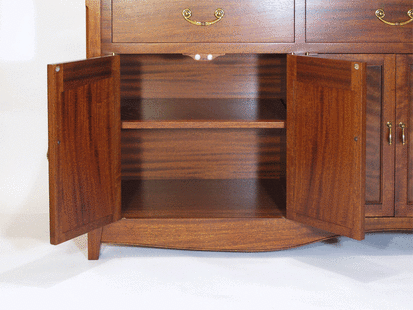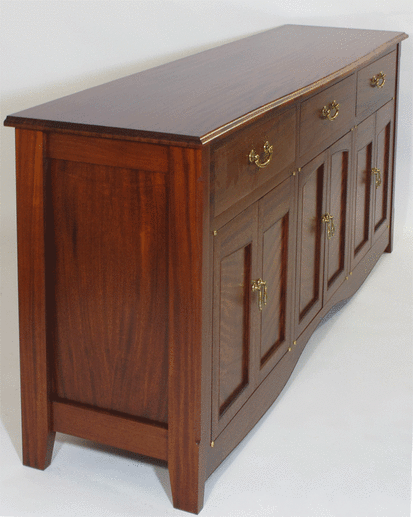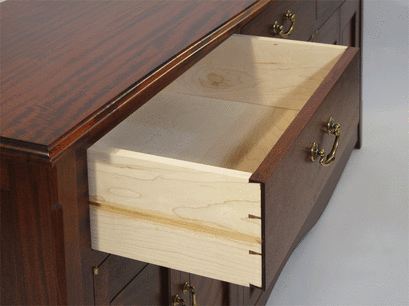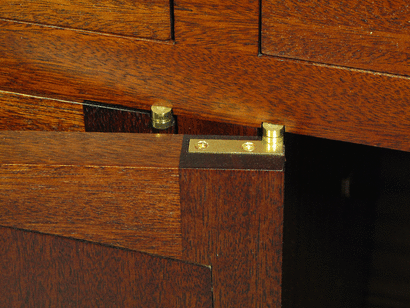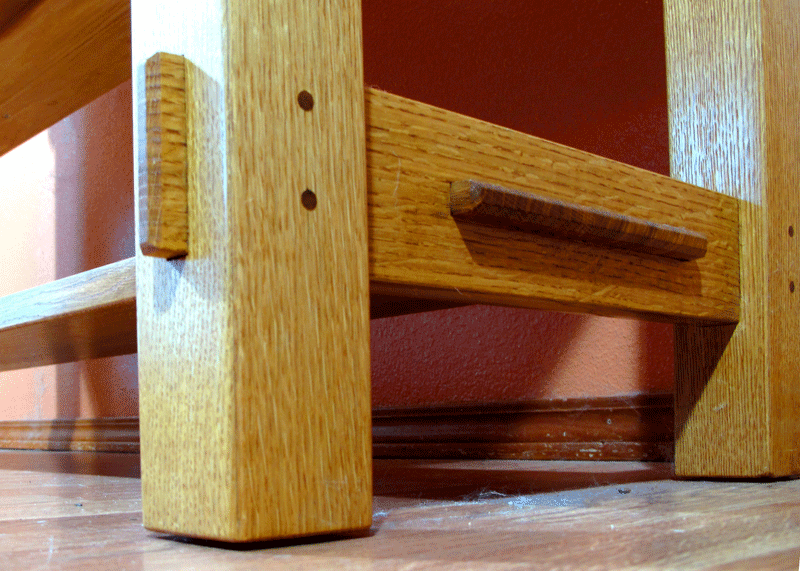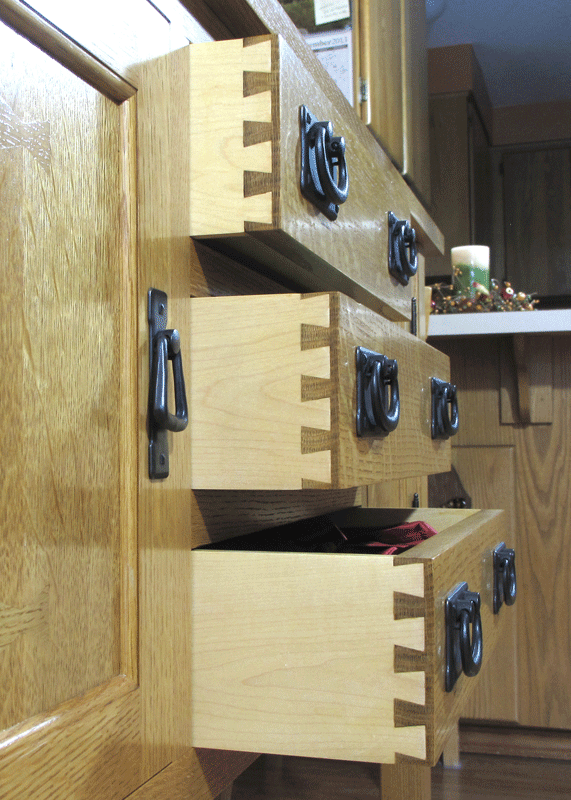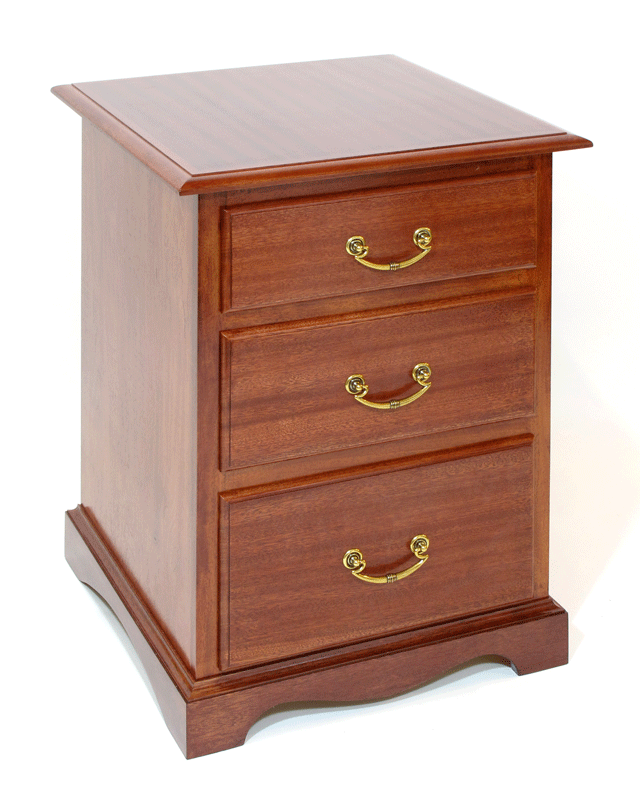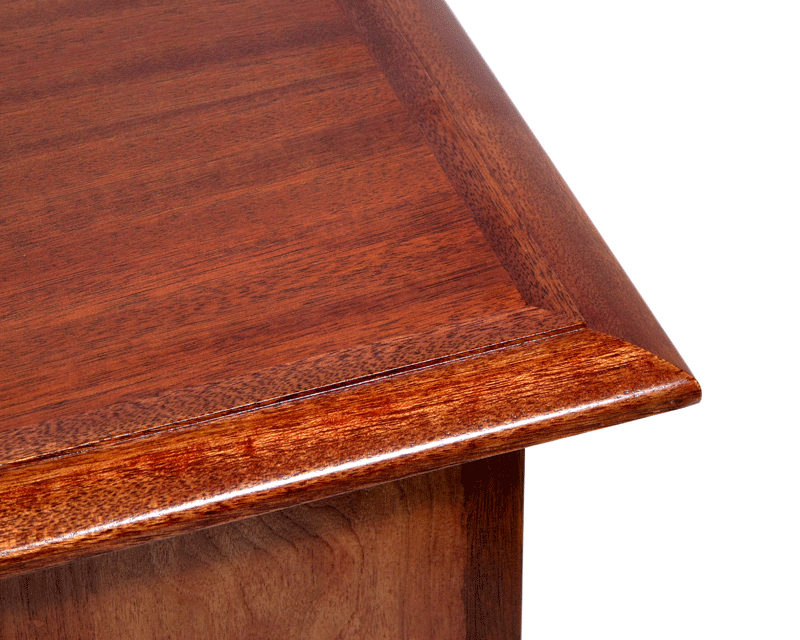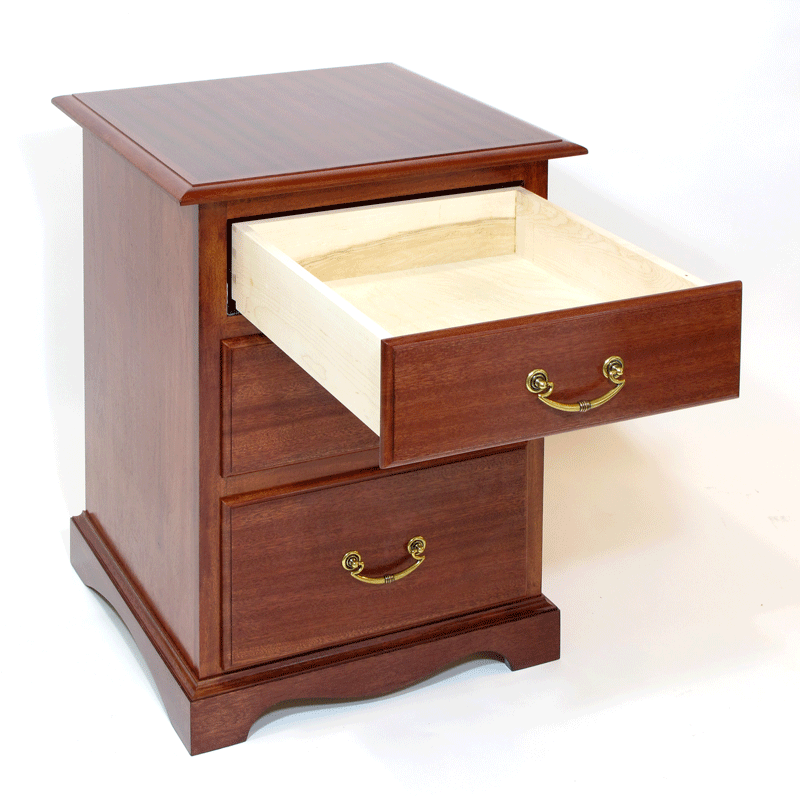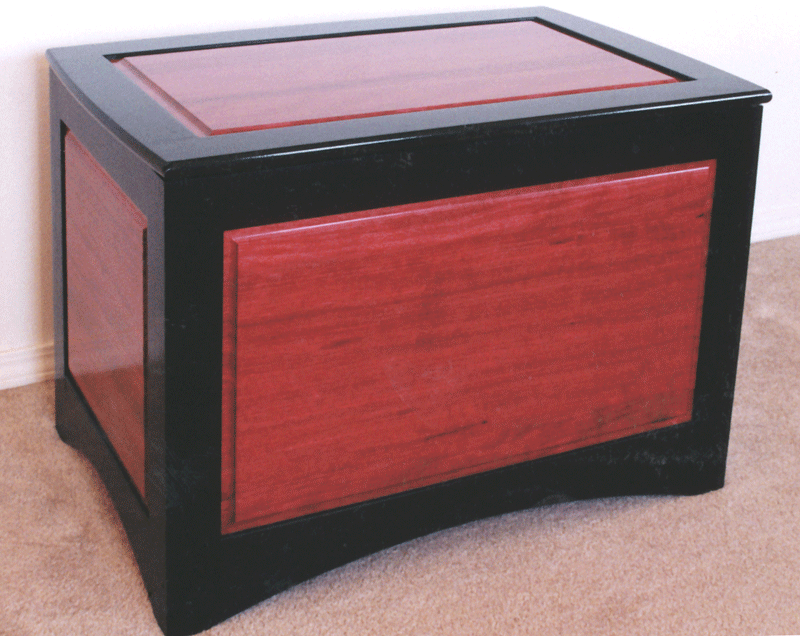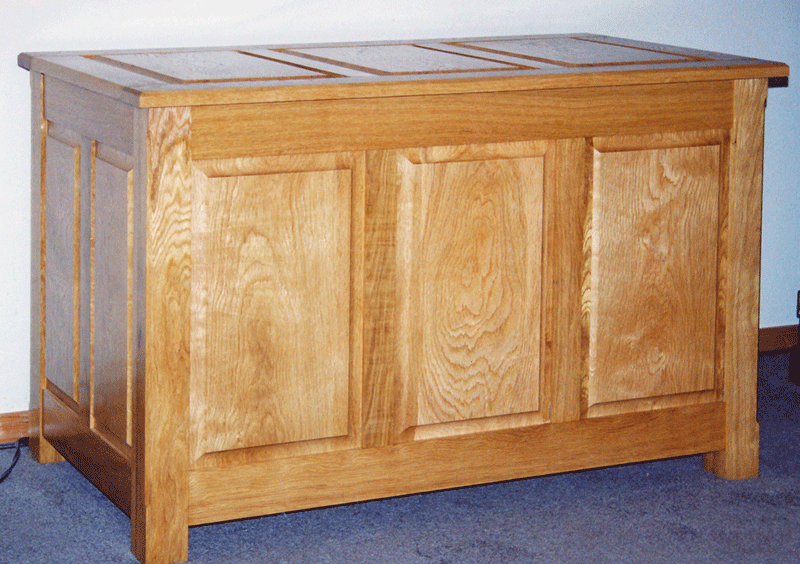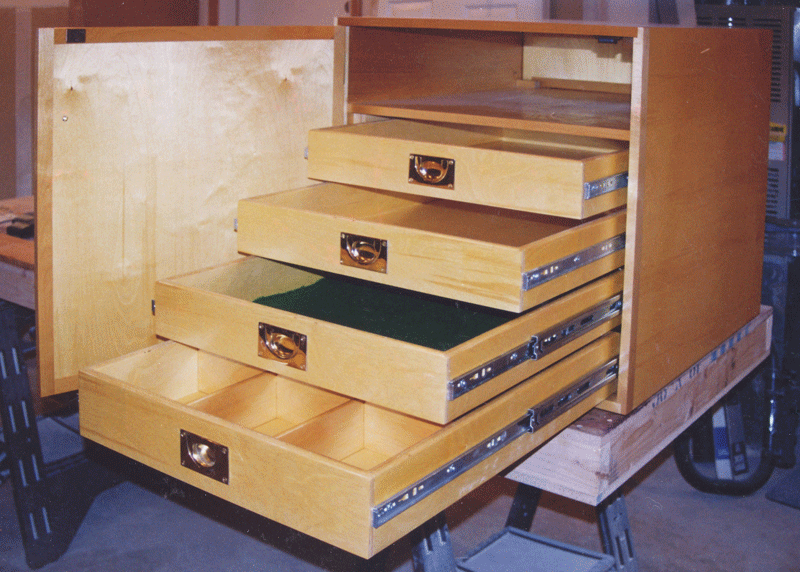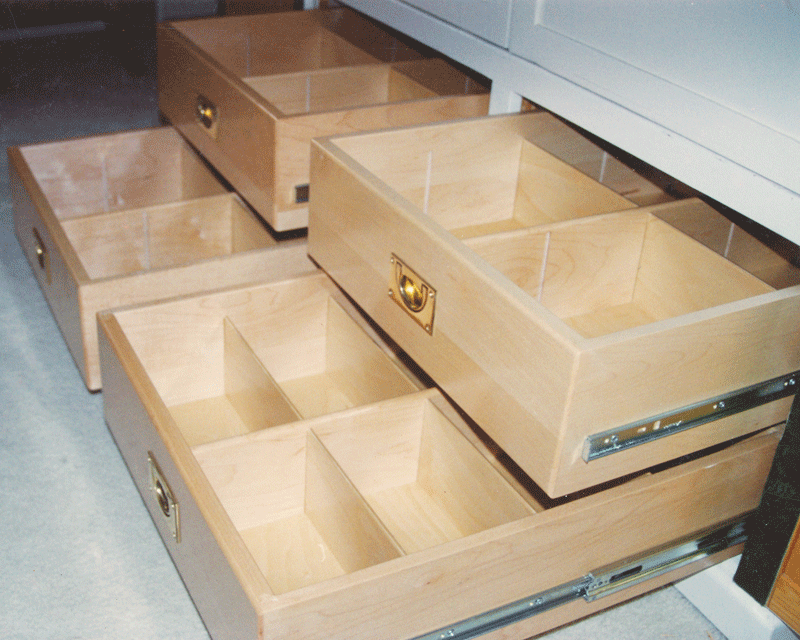Cabinetry and Chests
Home Office Cabinets for an Architect
This cabinet assembly is 14' wide and 8' tall. It includes two large cabinets with shelving, on the outside, two sets of drawers, two Pocket-door units containing pullouts for the Printer and Shredder, and a special display unit. The display unit was designed to represent weaving art of Native American Peoples (see the closeup). The copper inlay is to emphasize the weaving motif. The cubbies will display weaving artifacts made by the client's ancestors.
Cabinet for Large Acquarium
Corbin Woodworks designed this specialized cabinet to hold a 2,500 pound aquarium tank. The base is built of heavy ash timbers. The doors open to give access to the various pumps and filters. The canopy has three doors in the front that open, and the entire front section lifts up. There are also two other hatches near the rear. The cherry wood and stain match other furniture in the clients home.
China Cabinet
Corbin Woodworks designed this chest with several objectives: first, the client wanted as much storage as could reasonably fit in the client's space; secondly, the wood and stain needed to match other furniture in the room; thirdly, we wanted to show off the beauty of these particular woods as clearly as possible; and fourthly, we wanted the design to be interesting and not monotonous. The woods we chose were African mahogany for the bulk of the chest, and curly redwood for the door panels and for the space behind the dishes.
A central focus of the design is the curve of the shop-made crown molding, which is reflected in the curves of the tops of the glass doors, the glass itself, the curves of the top rails of the cabinet doors, and the curve of the bottom skirt. Also, the grain across the three drawers reflects an upward swing as well.
The curly redwood panels were sawn from two large blocks of redwood reclaimed from old stumps of giant redwood trees. The curl is a result of the huge weight of the tree pressing down on the vertical fibers of the tree trunk.
The hutch shelves are glass, as well as the two sides and the four doors, which along with four triple LED lights above, nicely showcase the client's china and crystal.
A central focus of the design is the curve of the shop-made crown molding, which is reflected in the curves of the tops of the glass doors, the glass itself, the curves of the top rails of the cabinet doors, and the curve of the bottom skirt. Also, the grain across the three drawers reflects an upward swing as well.
The curly redwood panels were sawn from two large blocks of redwood reclaimed from old stumps of giant redwood trees. The curl is a result of the huge weight of the tree pressing down on the vertical fibers of the tree trunk.
The hutch shelves are glass, as well as the two sides and the four doors, which along with four triple LED lights above, nicely showcase the client's china and crystal.
This image is a close view of the book-matched curly redwood veneer on the rear panel. It also shows the magnetic catches on the doors, and the 34" wide expanse of the middle shelves. It also illustrates how the offset-knife door hinges allow for nearly full opening of the doors. Also the shelves are supported at the rear with a structure which also supplies a plate groove. The door glass is seated using shop-made quarter-round, using bent-laminations for the curved upper portions where needed.
China Cabinet Base
The base unit contains three roomy drawers and three sets of cabinet doors. The drawers are made using hand cut half-blind dovetails; the drawer sides are hard maple, and the drawer bottoms are 1/2" thick solid hard maple. The base back, shelves and bottom are sapele plywood, with shelves and bottom rimmed with solid African mahogany.
Use of contoured upper rails on the cabinet doors and the book-matched curly redwood panels helps to reduce the monotony of so many identically-sized doors. Also, please notice that the drawer fronts and their surrounding face frame is cut from a single piece of wood, showing continuous curved grain across the front. This helps to add to the interest.
The drawers are side-hung on wooden runners which provides more precise sliding, and divides seasonal wood movement between the upper and lower spaces, instead of cramming it all into the upper space, necessitating that space to be larger. Also, the doors use offset knife hinges, providing precision and minimal exposure, and are closed with quality magnetic catches.
The finish of both units is a very hard and durable catalyzed lacquer, sprayed, with a stain custom-mixed stain to match existing woodwork.
Use of contoured upper rails on the cabinet doors and the book-matched curly redwood panels helps to reduce the monotony of so many identically-sized doors. Also, please notice that the drawer fronts and their surrounding face frame is cut from a single piece of wood, showing continuous curved grain across the front. This helps to add to the interest.
The drawers are side-hung on wooden runners which provides more precise sliding, and divides seasonal wood movement between the upper and lower spaces, instead of cramming it all into the upper space, necessitating that space to be larger. Also, the doors use offset knife hinges, providing precision and minimal exposure, and are closed with quality magnetic catches.
The finish of both units is a very hard and durable catalyzed lacquer, sprayed, with a stain custom-mixed stain to match existing woodwork.
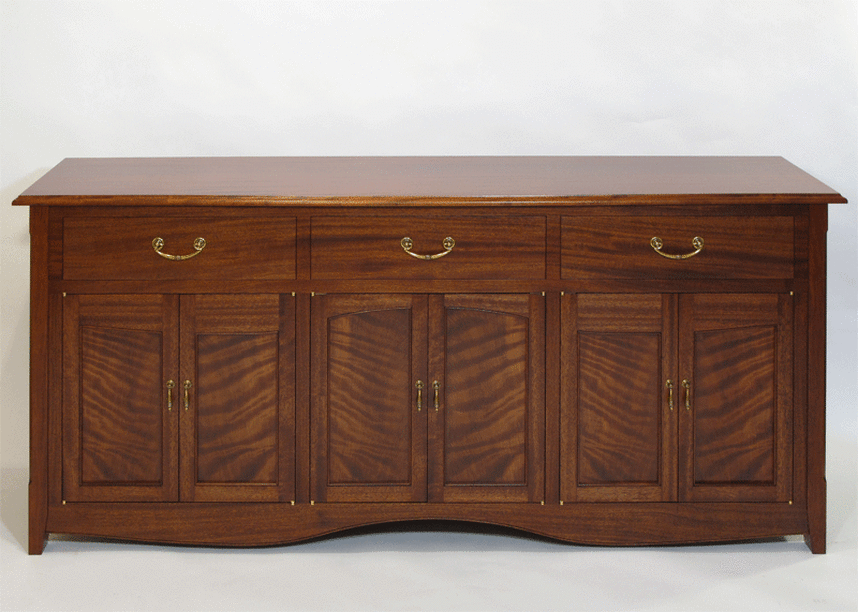
View of the hutch base from the front.
Side Board
Built in the classic Mission Style, from quarter-sawn white oak. Each leg is constructed from four pieces, in the classic Stickley Style, assembled using miter joints (actually "lock-miter") so that each of the 4 sides of the leg shows quarter-sawn figure with ray fleck. The stretchers use real through tenons, not the fake ones normally seen. Also, we added the backsplash in classic form as an accent and to go along with the corbels on the sides.
Solid Walnut 3-drawer Chest
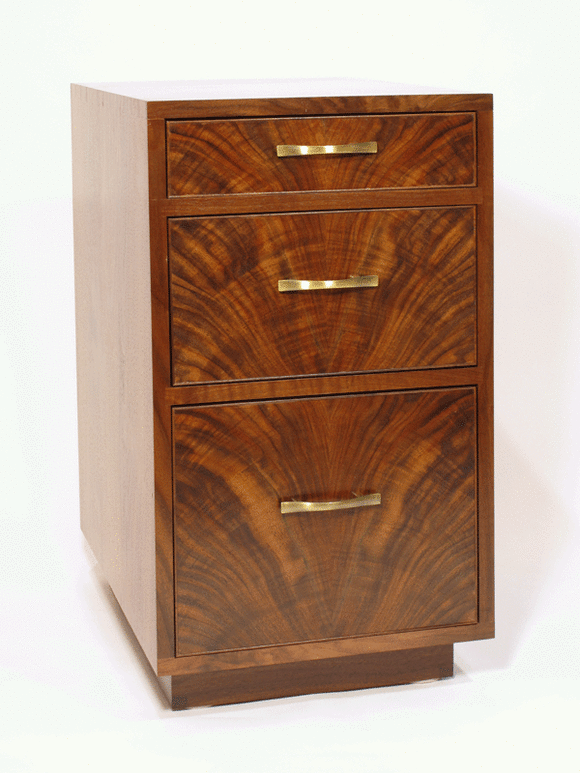
The bottom drawer of this chest is a file drawer. The chest was built to go under the walnut slab computer desk described in the gallery tables section. The case is solid western walnut, assembled using dovetail joinery. The drawers use soft close concealed under-mount slides. For the drawer fronts, we made thick veneer from a walnut board of beautiful crotch figure, and glued up this pattern on plain drawer fronts. The drawer fronts are also framed with a 1/8" thick "cock bead" to protect the edge of the veneer and add a framing effect to each drawer.

